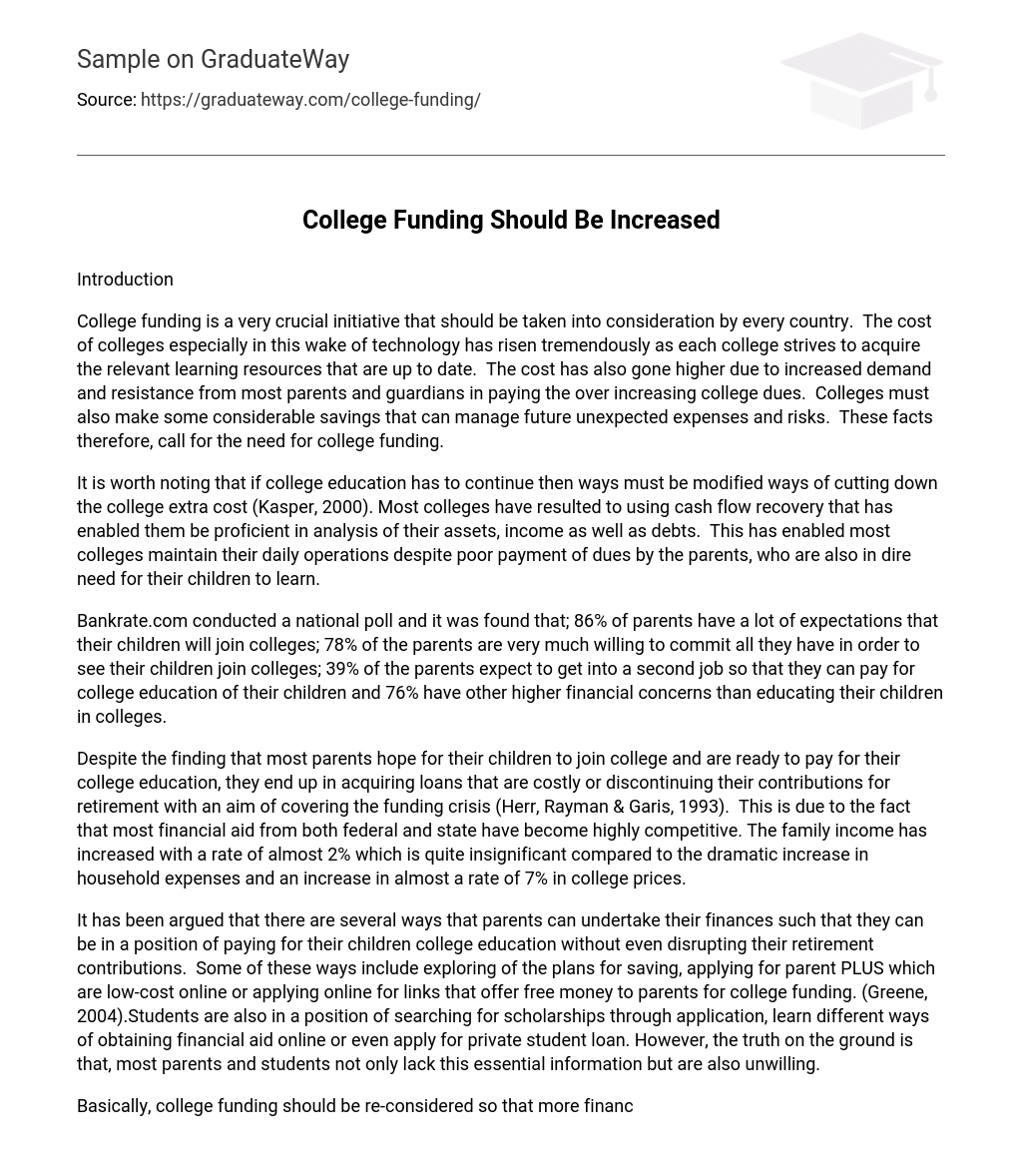Introduction
College funding is a very crucial initiative that should be taken into consideration by every country. The cost of colleges especially in this wake of technology has risen tremendously as each college strives to acquire the relevant learning resources that are up to date. The cost has also gone higher due to increased demand and resistance from most parents and guardians in paying the over increasing college dues. Colleges must also make some considerable savings that can manage future unexpected expenses and risks. These facts therefore, call for the need for college funding.
It is worth noting that if college education has to continue then ways must be modified ways of cutting down the college extra cost (Kasper, 2000). Most colleges have resulted to using cash flow recovery that has enabled them be proficient in analysis of their assets, income as well as debts. This has enabled most colleges maintain their daily operations despite poor payment of dues by the parents, who are also in dire need for their children to learn.
Bankrate.com conducted a national poll and it was found that; 86% of parents have a lot of expectations that their children will join colleges; 78% of the parents are very much willing to commit all they have in order to see their children join colleges; 39% of the parents expect to get into a second job so that they can pay for college education of their children and 76% have other higher financial concerns than educating their children in colleges.
Despite the finding that most parents hope for their children to join college and are ready to pay for their college education, they end up in acquiring loans that are costly or discontinuing their contributions for retirement with an aim of covering the funding crisis (Herr, Rayman & Garis, 1993). This is due to the fact that most financial aid from both federal and state have become highly competitive. The family income has increased with a rate of almost 2% which is quite insignificant compared to the dramatic increase in household expenses and an increase in almost a rate of 7% in college prices.
It has been argued that there are several ways that parents can undertake their finances such that they can be in a position of paying for their children college education without even disrupting their retirement contributions. Some of these ways include exploring of the plans for saving, applying for parent PLUS which are low-cost online or applying online for links that offer free money to parents for college funding. (Greene, 2004).Students are also in a position of searching for scholarships through application, learn different ways of obtaining financial aid online or even apply for private student loan. However, the truth on the ground is that, most parents and students not only lack this essential information but are also unwilling.
Basically, college funding should be re-considered so that more financial aid is given especially to those families that are more financially challenged. More private organizations that give grants and low interests loans to students should also show up in order to facilitate college education. Programs such as Federal Work study should be extended from campuses to colleges in order to enable the college students earn money through working so as to pay for their college education dues. (Greene, 2004). The financial aid from federal and the state should be slightly increased to meet the high increasing college cost.
References
Greene A. (2004).The Women’s Movement and the Politics of Change at a Women’s College: Jill Ker Conway at Smith, 1975-1985. RoutledgeFalmer.
Herr L., Rayman R. & Garis W. (1993).Handbook for the College and University Career Center. Greenwood Press.
Kasper F. (2000). Content-Based College ESL Instruction. Lawrence Erlbaum Associates,





